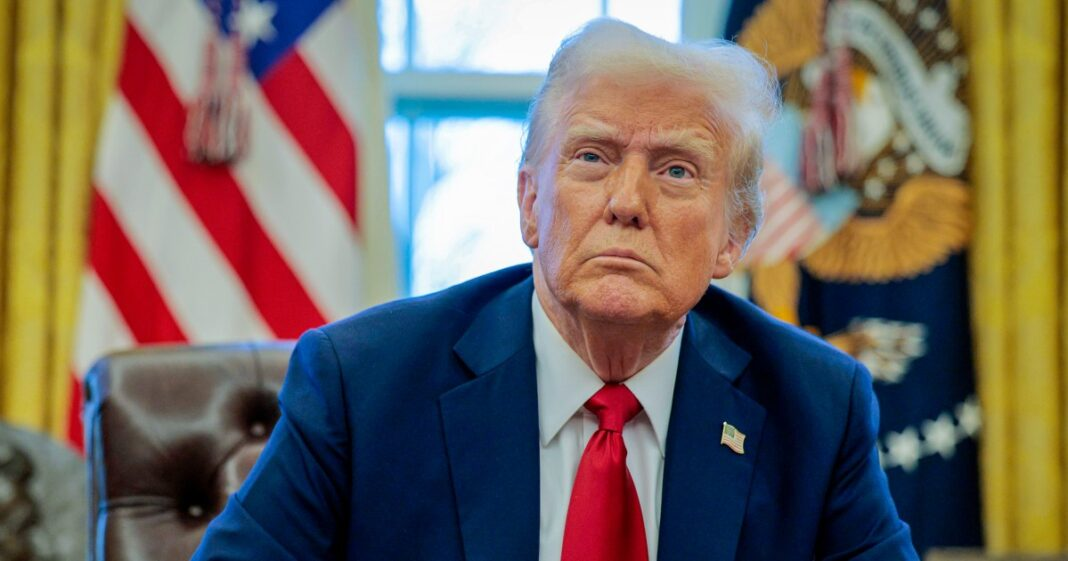The impact of Trump tariffs on imports from countries like Mexico, Canada, and China is set to reshape the shopping experience for American consumers. Major retailers, including Walmart, Target, and Best Buy, have signaled sharp price increases in the coming days as they grapple with new import tariffs that can reach up to 25%. Consumers are bracing for a ripple effect on US retail prices, particularly for staples sourced from these regions, such as fresh produce and electronics. As major retailers adjust their pricing strategies, there’s a growing concern about the affordability of everyday goods and the potential consequences for manufacturing jobs in the US. The looming changes in the supply chain illustrate the complex interactions between tariffs and the costs consumers will inevitably face.
The recent trade policies initiated by the Trump administration, particularly the imposition of substantial import tariffs, are creating significant strains in the retail sector. These duties, primarily affecting products imported from key partners like Mexico and China, are likely to lead to elevated costs for buyers across the United States. Businesses are preparing for a recalibration in retail pricing, which may erode consumer purchasing power and disrupt established supply chains. While some companies might explore localized sourcing options, many are expected to pass on the additional financial burdens to shoppers. As we navigate these changes, the interplay between tariffs and the economy will continue to unfold, leaving consumers and businesses alike in a precarious position.
Understanding the Impact of Trump’s Tariffs on Retail Prices
Donald Trump’s tariffs on imports from Mexico, Canada, and China are projected to have a significant impact on US retail prices. Major retailers like Target and Walmart have alerted consumers about upcoming price increases that may occur as soon as the tariffs take effect. Target’s CEO, Brian Cornell, emphasized that categories of essential produce, including strawberries and avocados, sourced primarily from Mexico, will be directly affected. These price hikes are a consequence of the 25% import tax imposed on goods, which translates directly into increased costs for consumers. As retailers face rising expenses, they will necessarily pass these costs onto shoppers, thereby inflating prices across the board.
The announcement of imminent price increases has already made waves in the retail sector. Best Buy’s CEO Corie Barry noted that the dependency on suppliers from China and Mexico dictates that the import tariffs will likely lead to elevated prices on electronics and other goods. Consumers are warned to brace for changes that may affect their purchasing decisions and overall spending power. With ongoing inflation and rising prices, the tariffs introduced under Trump’s administration could exacerbate the burden felt by households across the nation. This reality highlights the interconnected nature of the global supply chain—whereany shifts caused by tariffs can impact consumer prices significantly.
How Import Tariffs Influence Manufacturing Jobs
The narrative surrounding Trump’s tariffs often includes the promise of revitalizing American manufacturing jobs. However, recent surveys indicate that a substantial number of companies are not diverting their supply chains back to the U.S. as expected. Instead, they are focusing on cost-cutting measures which may include laying off employees. Only a minority, about 21%, indicated plans to invest in expanding U.S. manufacturing facilities—an option that typically demands significant time, resources, and commitment. As corporations face import tariffs, they are more likely to streamline operations and minimize costs, raising concerns about the long-term employment outlook.
The paradox lies in the fact that while tariffs are intended to incentivize domestic manufacturing, their immediate impact seems to lean toward harming job security rather than enhancing it. Research suggests that tariffs do not unequivocally lead to the reshoring of jobs but can instead destabilize existing positions within manufacturing. Consumers may notice price increases long before they see any tangible benefits in job creation. Ultimately, this situation reveals the complex dynamics of trade policy—where immediate economic pressures often overshadow the lengthy processes required to foster sustainable job growth.
The Role of Supply Chain Adjustments in the Face of Tariffs
Supply chain adjustments are crucial as companies navigate the implications of Trump’s tariffs. Major retailers are exploring various strategies to mitigate the financial burdens imposed by increased import costs. Some retailers are contemplating retaining certain product prices while allowing others to absorb higher costs, as highlighted by Target’s Chief Commercial Officer Rick Gomez. This approach reflects a critical tension within the industry: balancing customer retention while managing rising costs due to tariffs. As companies adjust their pricing strategies, they may also rethink supplier relationships and potentially seek more domestic alternatives, although this poses questions about feasibility.
In response to tariff-induced pressures, a survey by Economist Impact reveals that 40% of businesses are contemplating increasing domestic sourcing. However, questions remain regarding whether U.S. supply chains can sufficiently meet heightened demand. The complexity and uncertainty of shifting supply chains present an array of challenges for retailers. Adjustments made in the supply chain may involve significant logistical hurdles and reconfiguration of existing operations. As stakeholders work to adapt, the emphasis must remain on balancing the costs of sourcing with the demand for competitive pricing—a challenging endeavor in an evolving market driven by tariffs.
Anticipating Consumer Behavior Amid Price Increases
As consumers brace for the repercussions of Trump’s tariffs, understanding their likely behavior becomes paramount. Price sensitivity is expected to rise as everyday items become more expensive. Retailers must strategize on how to best communicate these changes without losing customer loyalty. Consumers may shift their purchasing habits, seeking alternatives or turning to discount retailers to offset spending. The perception of higher prices can fundamentally alter consumer psychology, prompting them to re-evaluate their buying choices—be it opting for lesser-known brands or seeking out local providers.
Additionally, the cumulative effects of rising prices due to import tariffs are likely to skew consumer purchasing patterns beyond the immediate financial implications. With everyday goods such as produce and electronics facing imminent price hikes, shoppers may prioritize essential purchases while delaying discretionary spending. This behavioral change could further perpetuate the cycle of cost-cutting for retailers, as reduced consumer spending could lead to even less financial flexibility for businesses. Understanding these dynamics is crucial for retailers aiming to innovate their marketing strategies while navigating the evolving economic landscape.
The Wider Economic Effects of Trump’s Tariffs
The broader economic implications of Trump’s tariffs extend beyond individual retailers. As these import taxes come into effect, the ripple effects are expected to resonate throughout the economy. By raising costs for consumers and impacting retailers’ pricing strategies, we may see a broader inflationary trend that affects various sectors beyond just retail. Economists warn that the tariffs could stifle overall economic growth as disposable income shrinks and consumer spending declines in response to higher prices. Retail markets, often viewed as a barometer of economic health, may struggle under the weight of new tariffs.
Moreover, as retail prices rise, the impact on lower and middle-income households could be particularly severe. Historically, these demographics tend to spend a larger portion of their income on consumer goods and necessities. Higher prices on essential items may force difficult financial decisions and exacerbate socioeconomic disparities. The implementation of tariffs, therefore, becomes more than just a trade policy; it emerges as a potential catalyst for increased economic stratification, compelling policymakers to consider the holistic ramifications of their decisions and navigate the sensitive balance of protecting domestic industries while ensuring consumer welfare.
Political Reactions to Tariffs and Consumer Price Increases
The political landscape surrounding Trump’s tariffs has sparked several reactions aimed at addressing the possible fallout consumers may face. Political opponents and consumer advocacy groups have raised concerns that the increased costs on goods will chiefly impact everyday Americans. Calls for reevaluation or rollback of these tariffs express a desire to put consumer interests at the forefront. Politicians are urged to consider the broader ramifications of tariffs on inflation and the standard of living for average households—elements that resonate deeply in the public consciousness as they head toward election seasons.
Additionally, political leaders advocating for the removal or reduction of these tariffs highlight the importance of global trade relationships. As the U.S. positions itself in a changing geopolitical climate, maintaining strong trading partnerships could mitigate the adverse effects of tariffs on consumer prices. For consumers already strapped due to inflation, the political discourse surrounding tariffs plays a crucial role in shaping policy outcomes. In addressing these sentiments, lawmakers navigate a complex landscape that balances international trade interests with national economic wellbeing—a delicate yet integral aspect of economic governance.
Global Trade Perspectives on Trump’s Tariffs
Examining Trump’s tariffs also requires us to consider global trade dynamics, where the U.S. is enmeshed in a complex network of trade relationships. Recently, countries like China and Canada have voiced displeasure over the tariffs, stressing the potential for retaliatory measures that could disrupt not just U.S. markets, but global supply chain stability as well. Tariffs can lead to trade wars that hurt all parties involved, and consumers are left grappling with escalating prices stemming from broader geopolitical tensions.
Furthermore, the long-term consequences of tariffs on global commerce may result in shifts in sourcing practices. Businesses might begin to diversify their supplier nations to circumvent high import costs, which could lead to more friction in already delicate trade negotiations. Analysts suggest that in an interconnected global economy, there must be careful consideration of how tariffs affect not just domestic markets, but also international partnerships, consumer choice, and the overall landscape of global commerce—in such a scenario, adaptability becomes essential for businesses and consumers alike.
Consumer Perception of Retailers Post-Tariff Implementation
As news about impending price increases spreads, consumer perception of retailers may shift dramatically. The high-profile warnings from companies like Target, Walmart, and Best Buy could lead to a decline in brand loyalty if consumers perceive these retailers as unfairly profiting from tariffs. Shoppers who once favored certain retailers for their reasonable pricing may become disillusioned if they feel pressured by steep price hikes. How retailers communicate the reasons behind these increases will play a critical role in shaping consumer reactions and perceptions moving forward.
In adapting to this challenging environment, retailers may need to enhance their customer service strategies and transparency levels. By openly discussing pricing adjustments and the impact of tariffs on their supply chains, retailers can foster trust and loyalty among consumers. Transparency in pricing models may soften the blow of price increases and help retailers maintain their competitive edge in a landscape marked by heightened consumer sensitivity due to tariffs. Ultimately, the efficacy of these approaches will depend on how well retailers can align consumer expectations with their operational realities in a post-tariff economy.
Frequently Asked Questions
What is the impact of Trump tariffs on import prices for consumers?
Trump’s tariffs on imports are expected to lead to significant price increases for consumers. Major retailers like Target, Walmart, and Best Buy have already warned that shoppers will likely notice higher prices on goods sourced from countries like Mexico and China due to the 25% tax on imported items.
How will Trump’s tariffs affect supply chains for retailers?
Trump’s tariffs will impact supply chains by increasing import costs. Retailers dependent on foreign suppliers, such as Target and Best Buy, may pass these costs onto consumers, leading to adjustments in pricing. This could result in a shift in how retailers manage their supply chains and source products.
Are manufacturing jobs likely to increase due to Trump’s import tariffs?
While Trump has suggested that tariffs will enhance American manufacturing jobs, research indicates that the tariffs may negatively affect the reshoring of jobs. Many companies plan to cut costs or lay off employees rather than invest in expanding U.S. manufacturing capabilities.
What products are expected to see price increases due to Trump’s tariffs?
Products such as electronics, produce, and household goods are expected to see price increases due to Trump’s import tariffs. For example, fruits like strawberries, avocados, and bananas sourced from Mexico are likely to reflect rising costs for consumers soon.
Will retailers like Walmart be able to absorb the costs of Trump’s tariffs?
No, major retailers like Walmart have indicated that they will not be completely immune to Trump’s tariffs. As import costs rise, they will likely need to pass those costs onto consumers, affecting retail prices across a range of products.
What modifications are retailers making in response to the impact of Trump’s tariffs?
In response to Trump’s tariffs, retailers are planning to adjust their pricing strategies. While some may choose to keep prices stable for select products, they may raise prices on other items to balance the increased costs associated with tariffs.
What percentage of companies plan to adjust their sourcing due to Trump’s tariffs?
A survey conducted by Economist Impact found that 40% of companies are planning to increase domestic sourcing in response to Trump’s tariffs, though many are also cutting costs or laying off employees instead of expanding U.S. manufacturing.
| Retailer | Predicted Impact | Source Countries | CEO Statements |
|---|---|---|---|
| Target | Price increases expected soon | Mexico | “Consumers are likely to see price increases over the next few days” – Brian Cornell. |
| Best Buy | Higher import costs likely to be passed to consumers | China, Mexico | “Tariff costs will be passed along to retailers” – Corie Barry |
| Walmart | Unable to maintain low prices indefinitely | Mexico, China | “We will not be completely immune to these tariffs” – John Rainey |
| General trend | Greater reliance on cost-cutting measures rather than reshoring | N/A | 40% of companies plan to increase domestic sourcing; 21% to expand manufacturing |
Summary
The Trump tariffs impact is already being felt across major retailers in the U.S., with concerns over rising prices for everyday items becoming a reality. Executives from Target, Best Buy, and Walmart have all confirmed that the new import taxes are likely to increase costs for consumers, citing their reliance on Mexico and China for products. While some companies may adjust their pricing strategies, the overall sentiment is one of caution and cost-cutting, rather than a significant shift towards reshoring manufacturing back to the U.S. The immediate effects of Trump’s tariffs on consumers will be felt through price hikes in popular goods, overshadowing any potential long-term benefits in the manufacturing sector.



